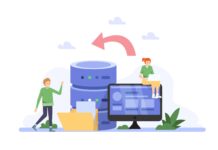Building a successful RIA technology stack is critical for any organization to achieve the desired results. It combines different software tools and technologies used to build web-based applications that offer rich user experiences. An efficient tech stack brings several benefits, such as improved performance, scalability, and user engagement. This article will discuss five ways to build an RIA technology stack that brings results.
Steps To Build RIA Technology Stack
1. Define the application requirements
Before starting to build an RIA tech stack, it is crucial to understand the application’s requirements. Identifying the application’s purpose, features, and user requirements is the first step in building a successful RIA tech stack. Understanding the user’s needs is essential to create an application that delivers a rich user experience. Defining the target platform, device, and browser support is important to ensure compatibility with the user’s devices. Defining the requirements beforehand helps select the appropriate tools and technologies for the RIA tech stack.
2. Choose the right front-end framework
Selecting the right front-end framework is essential in building an RIA tech stack. A front-end framework provides tools and libraries that help create the user interface and handle user interactions. The framework should provide the required flexibility and scalability to create a responsive and user-friendly application. Popular front-end frameworks include Angular, React, and Vue.js. Choosing the right framework depends on the application’s requirements, the development team’s skills, and the ecosystem’s maturity.
3. Optimize the application’s performance
Optimizing the application’s performance is critical for delivering a rich user experience. The RIA technology stack should include tools and techniques that optimize the application’s performance. This includes optimizing the application’s load time, minimizing network requests, and reducing the application’s size. Techniques like lazy loading and code splitting help reduce the application’s initial load time. Using a Content Delivery Network (CDN) helps reduce the network latency and deliver the content faster. Minimizing the use of third-party libraries and optimizing the code helps reduce the application’s size, leading to faster load times.
4. Use a scalable back-end architecture
A scalable back-end architecture is essential in building an RIA technology stack that can handle high user traffic. A scalable back-end architecture uses a modular design that independently scales different components, which helps handle high user traffic without affecting the application’s performance. The back-end architecture should also include features like caching, load balancing, and auto-scaling to ensure high availability and performance. Popular back-end architectures include microservices and serverless architecture.
5. Test and monitor the application
Testing and monitoring the application is critical in ensuring the RIA tech stack’s success. Regular testing helps in identifying and fixing the application’s bugs and issues. Testing includes functional testing, performance testing, and security testing. Regular monitoring helps identify performance bottlenecks, server errors, and user experience issues. Tools like Google Analytics, New Relic, and AppDynamics help in monitoring the application’s performance and user behavior.
Benefits of Building an RIA Tech Stack
1. Improved User Engagement
It provides a rich user experience, making them highly engaging. By using interactive and intuitive features like animations, visualizations, and drag-and-drop functionality, the user experience can be significantly improved. This can lead to higher user engagement, retention, and, ultimately, increased revenue.
2. Higher Conversion Rates
Users that receive an immersive experience via RIA tech stacks are more likely to convert. Users are more likely to carry out their desired actions, such as submitting a form or making a purchase, by utilizing features like tailored suggestions, real-time data visualization, and interactive forms.
3. Better Customer Satisfaction
Users are more likely to be pleased with the application if it offers an interactive and engaging experience. Additionally, by adapting the experience to the demands of the user, It can offer a more personalized experience and increase customer satisfaction.
Tips for Building a Successful RIA Tech Stack
1. Keep the User in Mind
Prioritizing the user’s needs and experience is important when building an RIA tech stack. Consider their devices, browsers, and internet speed when optimizing the application’s performance. By designing an application with the user in mind, the overall user experience can be significantly improved.
2. Implement Security Measures
RIA tech stacks are vulnerable to security threats like Cross-Site Scripting (XSS), Cross-Site Request Forgery (CSRF), and SQL injection attacks. Implement security measures like input validation, encryption, and user authentication to prevent such attacks. Additionally, regular security audits should be performed to identify and fix vulnerabilities.
3. Use Cloud Services
Cloud services like Amazon Web Services (AWS), Google Cloud Platform (GCP), and Microsoft Azure can provide reliable and scalable infrastructure for RIA tech stacks. By using cloud services organizations can reduce the cost of infrastructure and focus on developing the application’s features.
4. Choose the Right Database
Choosing the right database is critical for building an RIA technology stack that delivers results. Consider the application’s data requirements, scalability, and performance when selecting a database. Popular databases for RIA tech stacks include MongoDB, MySQL, and PostgreSQL.
Conclusion
An effective RIA technology stack is the result of meticulous preparation and research of available options. Essential stages in establishing a successful RIA tech stack include defining the application requirements, choosing the appropriate front-end framework, optimizing the performance of the program, using a scalable back-end architecture, and testing and monitoring the application. Advantages like increased user engagement, increased conversion rates, and enhanced customer satisfaction can be provided by a well-designed RIA technology stack. An effective RIA technology stack can be built by following these five stages.
















